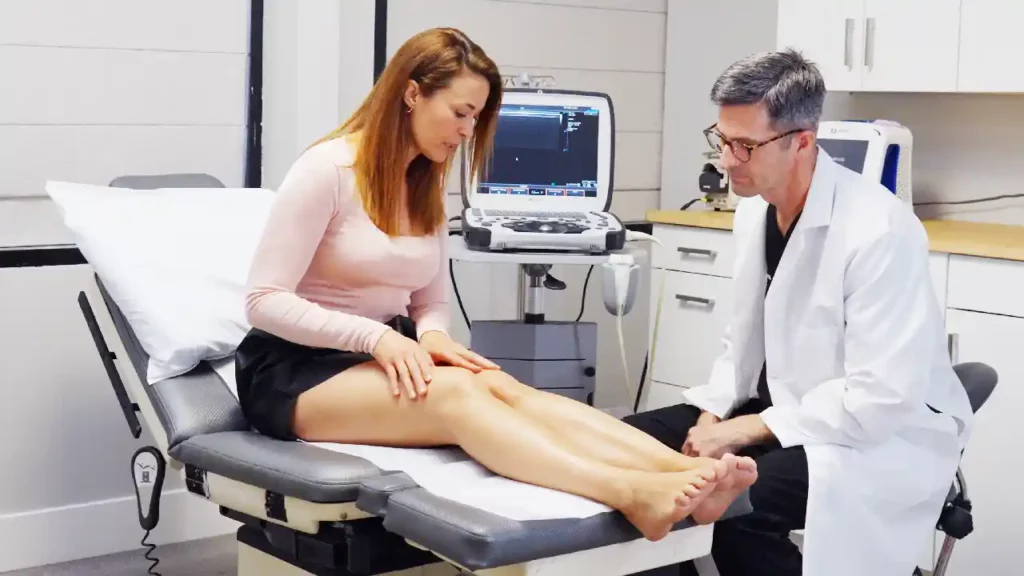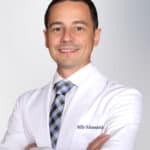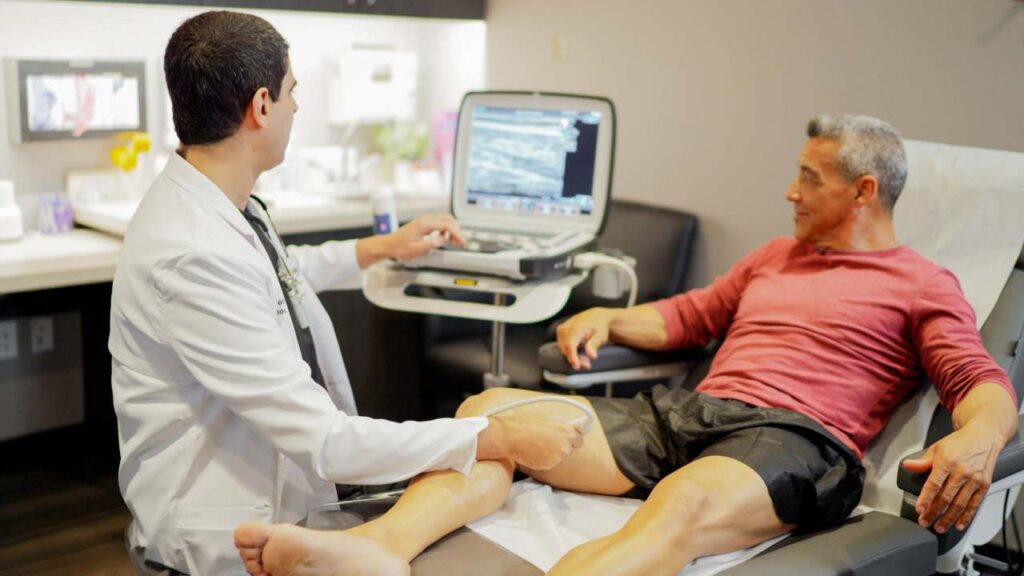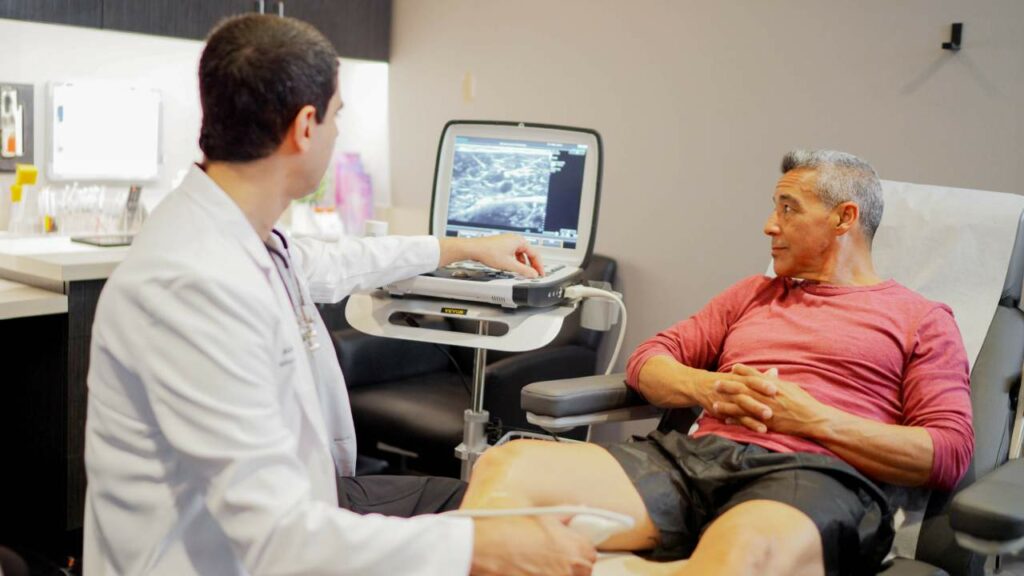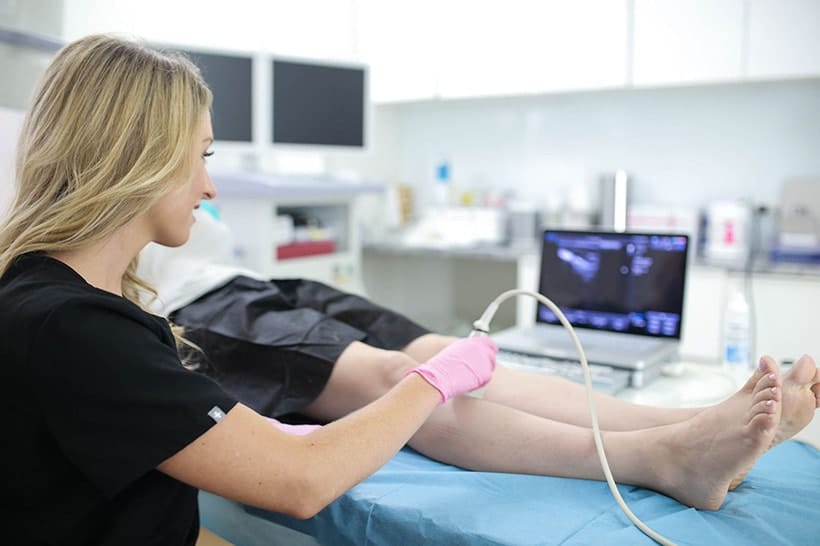What’s the Most Common Cause of Varicose Veins?
Varicose veins are caused by excess pressure in a vein. This is often the result of a common, yet underdiagnosed, disease called Chronic Venous Insufficiency (CVI). Leg veins must pump blood from the lower legs and feet all the way back to the heart. To do so, they rely on tiny cup-shaped valves inside the veins to close once blood passes through. They also rely on leg muscles to contract and help pump blood upward.
When valves fail and leg muscles are inactive, blood flows in reverse, building pressure that creates bulging varicose veins. Other factors increase pressure in the vein and create varicosities as well. These include pregnancy, obesity, and sitting or standing for long periods of time. Elevated blood pressure in a vein is different from elevated blood pressure in arteries, but they often coexist.
Book an appointment at our award-winning vein center in San Diego or San José to rid yourself of varicose veins in under 30 minutes! Californians’ healthy lifestyles help prevent varicose veins. But vein disease often runs in families, and valve failure is frequently linked to aging and hormonal shifts which are beyond your control. Varicose vein treatment is easier than ever in California. Schedule a consultation today to prevent unnecessary complications!

Do Damaged Valves Play a Role in Varicosities If I’m Healthy?
What is the main cause of varicose veins if you live a healthy life? As mentioned, CVI is a common disease that occurs even in healthy people. Over time, valves weaken or malfunction, particularly in the leg veins, since they’re battling gravity while bearing your body weight, as they return blood to the heart.
Valve failure often occurs in deeper veins, and then produces varicose veins at the surface. This is because superficial veins get less assistance from leg muscles than deeper veins do, and because they are smaller and weaker than arteries and deep veins. Maintaining a healthy weight and active lifestyle are essential to venous health. But some factors are simply beyond your control. Read about your risks below.
What Are My Risk Factors for Developing Varicose Veins?
Varicose veins are very common, so if you start developing varicose veins, you’re not alone. The majority of adults will develop varicose veins, spider veins, or both at some point in their lives. But some people are more at risk than others. Here are the main risk factors for developing varicose veins.
- A Family History: Varicose veins run in families. In fact, if both of your parents have varicosities, there’s a greater than 90% chance you will get them too. This is the top predictor of developing varicose veins
- Gender: Those who are born female have a greater tendency to develop varicose veins. This is because hormonal shifts that occur with pregnancy, menopause, and birth control usage impact pressure in the veins.
- Jobs with Excessive Sitting or Standing: While most jobs require some sitting or standing, certain professions lack sufficient breaks or position changes. Commercial drivers, security guards, receptionists, teachers, professors, doctors, and nurses are frequently affected by varicose veins. If you have a job that requires sitting or standing for long periods, take breaks to walk around, flex your legs muscles, elevate your legs, or have a seat, whenever possible.
- Obesity: Excess weight places a greater burden on your veins. Not only are veins overburdened, but they’re also prone to stretching with obesity. When veins stretch, valves have a harder time closing tightly, which leads to venous reflux and varicose veins.
- Aging: Try as we might, we can’t prevent aging, and the vascular system is affected by age, just like other systems in your body. This is not entirely preventable, but the severity can be dramatically reduced by living a healthy life and seeing a vein doctor proactively.
- Sedentary Lifestyle: Even if you’re at a healthy weight, sedentary lifestyles increase the development of varicose veins. Being sedentary reduces the number of leg muscle contractions, which makes it harder for veins to pump blood “uphill” against gravity. If you’re unable to stand, but your leg muscles work, do seated calf raises, flex your legs and feet, or make circles with your ankles. Lay on your back and make bicycle motions with your legs or bend your knees and push your feet toward and away from your heart. While resting, place your legs on a pillow to elevate them above your heart. If exercise isn’t an option, ask your doctor whether compression stockings will help.
How Do You Find the Cause of Varicose Veins?
Finding the cause of varicose veins is essential to keeping them away. The best way to determine the source of varicosities is to visit a qualified vein doctor. With duplex ultrasonography, vein doctors can pinpoint faulty valves and weak vein walls and treat them right in the office. Ultrasound imaging simplifies the process, so you can complete vein treatment within a lunch break! Cosmetic vein centers, and even many vein doctors, lack this technology. So, choose an accredited vein center with the latest technology to determine and treat the cause of varicosities.
Which Varicose Vein Treatments in California Work and How?
If you have veins that are painful and swell above the surface of your skin, it’s likely you have a varicose vein. But take heart because there are several quick and gentle varicose vein treatments in California. Vein stripping surgery is largely a thing of the past, when you choose a board certified vein doctor in California. Cutting-edge vein centers use minimally invasive tactics to treat varicose veins in less than 30 minutes. Here are five of the top minimally invasive varicose vein treatments in California.
- Sclerotherapy: This procedure injects a liquid or foam sclerosant into the vein to irritate it, which prompts it to swell and seal shut. Since blood can no longer enter it, the vein shrinks and disappears.
- Radiofrequency Ablation: Doctors inject an anesthetic to protect surrounding tissue from heat and then deliver radiofrequency to the vein’s walls to heat it and scar it shut. It is then harmlessly reabsorbed by the body.
- Endovenous Laser Ablation: A vein doctor uses the same approach as radiofrequency ablation but heats the vein with lasers instead of radiofrequency.
- Vein Adhesives: The vein specialist injects cyanoacrylate glue into the vein to seal it shut and reroute blood into functional veins.
- Mechanochemical Ablation: A specialty rotating catheter is inserted into the vein where it disrupts the vein walls and injects a sclerosant for a dual effort at closing varicose veins.
Visit our world-renowned vein centers in San Diego and San José for these and other solutions that treat the cause and appearance of varicose veins!
